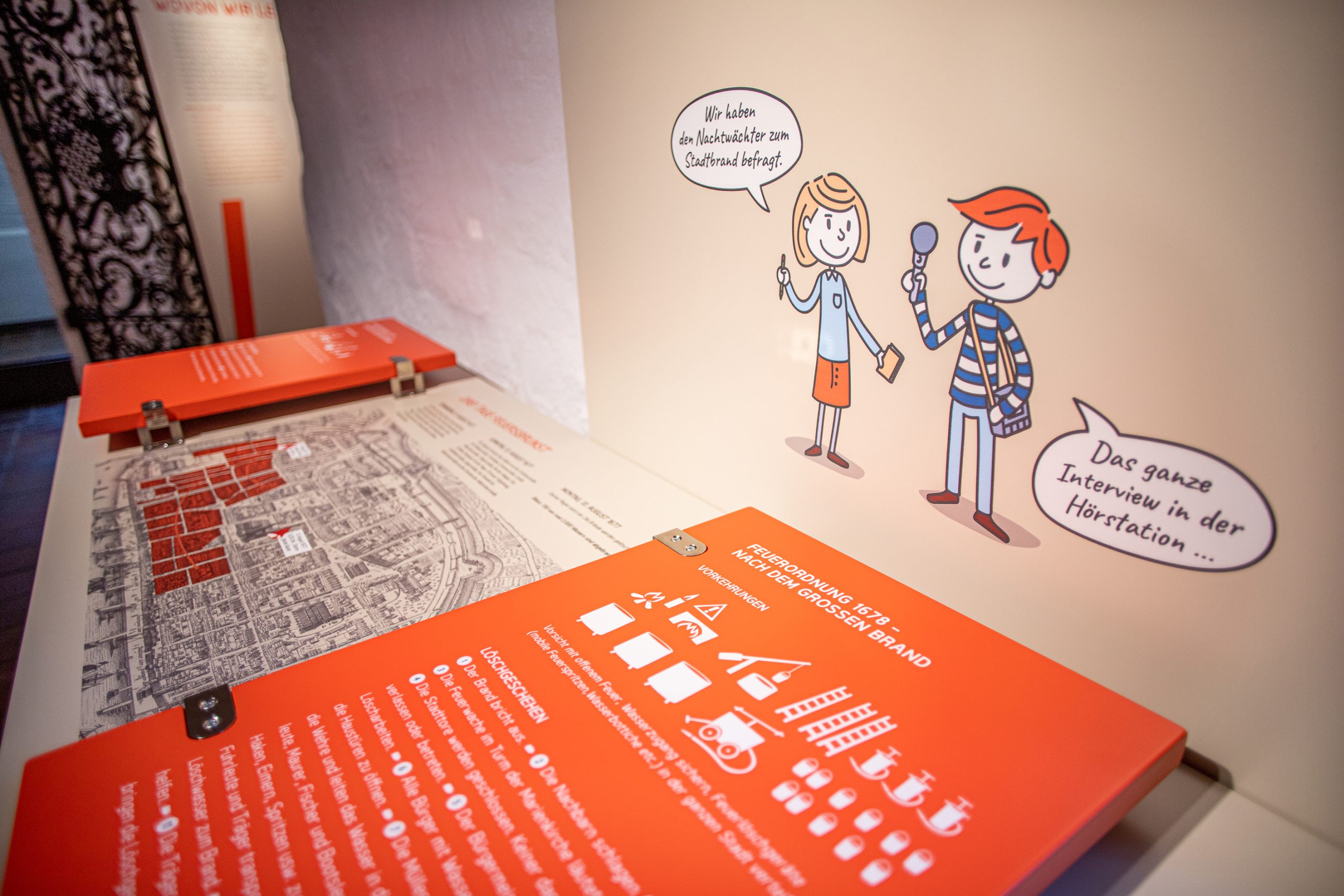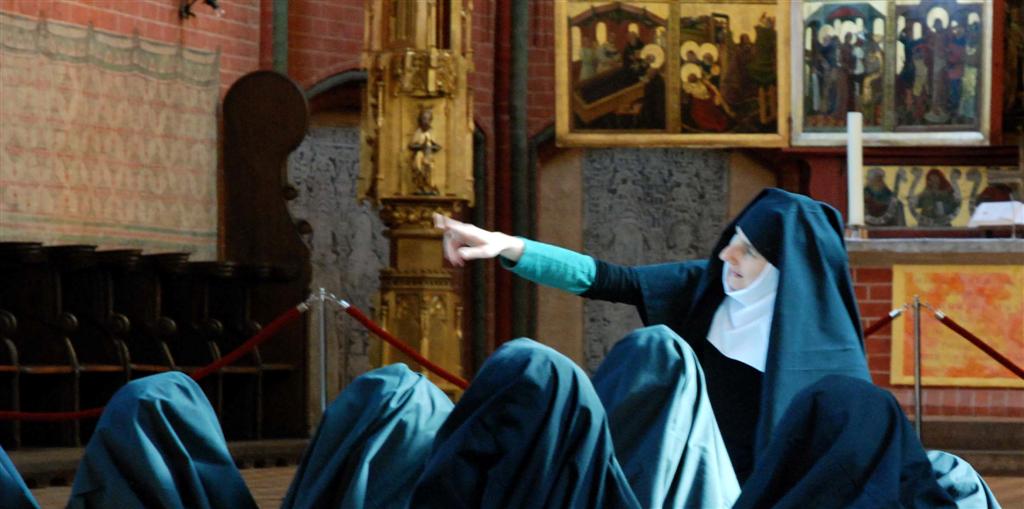

The museum's educational programs for preschoolers, school classes and vacationing children make the museum a place of discovery and wonder for its young visitors, a space for questions and insight.
Based on our collections, we give children and young people the opportunity for a very personal approach to art, history and stories.
Life in the monastery, characterized by ora et labora as a medieval form of living together, is the content of this educational museum program, which takes visitors through the historic rooms of the former Holy Cross Monastery.
To shed more light on everyday life with its rules and daily routines, the offering shows how nuns dressed, what work they did and where they took their meals. Finally, the students look at the former dormitories of the nuns and paint a nun's cell according to their own imagination
- Duration: about 1 hour
- School subject: science / art
- Learning plan reference: understanding and comparing time and history, different living conditions, time as an organizing principle
Pewter works in the form of drinking utensils made by Rostock craftsmen are a part of the arts and crafts exhibition.
Using welcome trophies and tubes from the various Rostock offices as examples, students explore the world of medieval trades.
Following this, the pewter vessels of the Rostock craftsmen serve as a template for designing their own drinking cup.
- Duration: approx. 1 hour
- School subject: science / art
- Learning plan reference: comparing past to present, development and change, discovering spaces, role behavior/images
No one today knows the silly Krischan or what mouseholes associate with health and well-being.
This educational museum experience remedies the situation! Using collection items from the Museum of Cultural History as a starting point, students delve into the world of Mecklenburg legends, fairy tales and superstition and find out where to find treasure without rainbows and magic.
- Duration: about 1 hour
- School subject: science / religion / German
- Learning plan reference: comparing past with present, different living conditions, habits
In 1596, the poem about the "Rostocker Kennwohrn" was published for the first time. It enumerates in lyrical form the Rostock landmarks.
Students travel back in time with the help of historical city maps, city models, and paintings to see which landmarks they know are still preserved today. Characteristic for Rostock are not only the landmarks, but also the heraldic animal of the city. How the griffin got on the coat of arms is also the content of the museum's educational offer.
In the practical part, the heraldic animal serves as a model for a self-designed protector.
- Duration: approximately 1 hour
- School subject: German / general knowledge